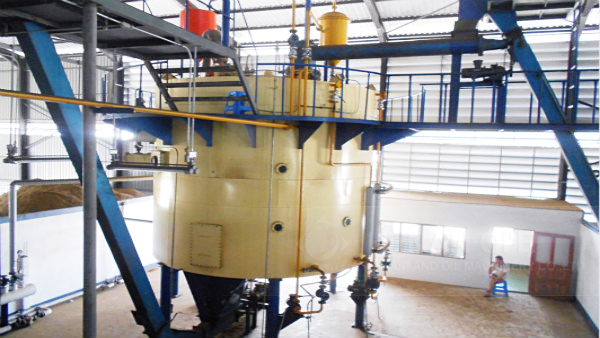
In the competitive arena of oilseed processing, maximizing oil yield while ensuring stable production remains a persistent challenge. Traditional mechanical methods like pressing have served the industry well, but solvent extraction systems are increasingly recognized as the game-changer for large-scale oilseed export factories. This article delves into the core scientific principles driving solvent extraction technology, demonstrating its superiority over conventional techniques. Through empirical cases involving soybeans and sunflower seeds, it reveals parameter optimization strategies ensuring high efficiency and purity. Insights from seasoned engineers address operational hurdles and compliance requirements, illustrating how our tailored solvent extraction solutions bring reliability, innovation, and sustainability to your processing lines.
At first glance, the solvent extraction process might seem technically overwhelming. However, one can simplify the essence as a three-stage interaction:
Compared to mechanical pressing, which relies on physical force and often leaves 5-10% oil trapped, solvent extraction routinely achieves >98% oil recovery. This significant uplift results from exploiting the molecular transport dynamics that pressing simply cannot address.
Applying solvent extraction effectively requires fine-tuning several key parameters: temperature, solvent-to-solid ratio, and residence time. Let's look at practical outcomes from recent projects:
| Parameter | Soybean Extraction | Sunflower Seed Extraction |
|---|---|---|
| Optimal Temperature | 60–65°C | 55–60°C |
| Solvent-to-Solid Ratio (v/w) | 3:1 | 2.8:1 |
| Residence Time | 45 minutes | 40 minutes |
| Oil Recovery Rate | >98.5% | >97.8% |
By meticulously controlling these parameters, our clients report up to a 7% increase in extraction yield compared to initial setups. Notably, adjusting solvent contact time proved critical to balancing throughput and oil purity — shorter times risk incomplete extraction, whereas overly long processes incur diminishing returns and energy waste.
Even with an optimized process, some recurring challenges demand practical solutions. Experienced engineers advise constant vigilance on two fronts:
“Regular solvent residue testing and equipment inspection are non-negotiable for maintaining compliance and product quality. Employing steam stripping alongside optimized solvent recovery loops reduces contamination concerns drastically,” shares a senior chemical process engineer with over a decade in oilseed extraction.
Furthermore, preventing equipment fouling requires implementing routine cleaning cycles and selecting solvent-compatible materials resistant to oil polymerization. Adoption of inline sensors helps detect early signs of clogging, enabling timely interventions before production impacts escalate.
To clarify the extraction journey, consider the following process schematic:

This visualization underscores how solvent interaction systematically extracts oil components while solvent recirculation minimizes resource waste — a cornerstone of modern environmentally-conscious oil processing.
As international markets increasingly emphasize sustainable and high-yield oil production, the demand for technologies combining efficiency and environmental compliance surges. Qi’e Group’s solvent extraction systems embody this blend by integrating:
Choosing our system means securing a partnership that harmonizes reliability, innovation, and economic performance — letting every drop of oil produced serve its highest value.
Ready to revolutionize your oil extraction line? Discover how Qi’e Group’s solvent extraction systems deliver unmatched efficiency and stability.



